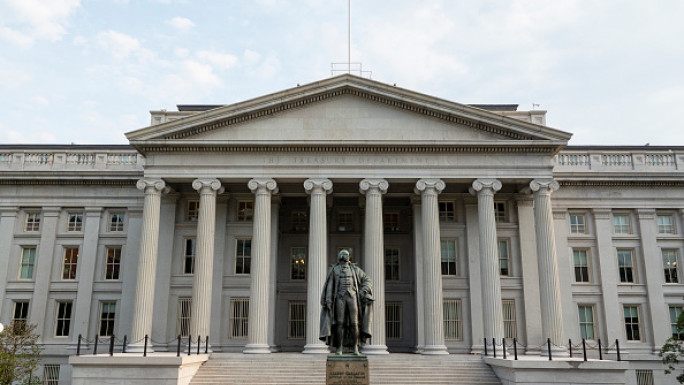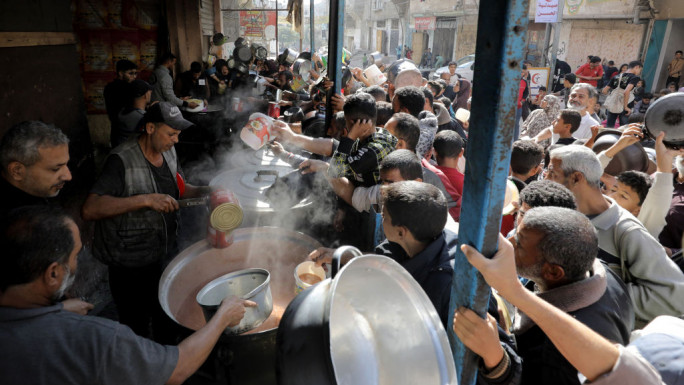
The Tragedy of Daraya
Daraya is - or used to be - a sizeable town in the Damascus countryside. A working and middle-class suburb of the capital, it was also an agricultural centre, famed in particular for its delicious grapes. In recent years the town has become a symbol of the Syrian revolution, and of revolutionary resilience in the most terrible conditions. And now - after its 25 August surrender to the Assad regime - it becomes symbolic of an even larger disaster.
Daraya's courageous social and political activism stretches back long before the eruption of the revolution in 2011. Its residents protested against Israeli oppression in Palestine during the Second Intifada, and then against the US invasion of Iraq. Those who believe that Assad's regime represents popular anti-Zionism and anti-imperialism won't realise how brave these actions were. Independent demonstrations were completely illegal in Syria, punishable by torture and imprisonment, even if the protests were directed against the state's supposed enemies. And Daraya's activism focused on domestic issues too, in the form of local anti-corruption and neighbourhood beautification campaigns.
Symbol of resistance
This legacy of civic engagement owes a great deal to the Daraya-based religious scholar Abd al-Akram al-Saqqa, who introduced his students to the work of "liberal Islamist" and apostle of non-violence Jawdat Said, and was twice arrested as a result. Jawdat Said emphasised, amongst other things, rights for women, the importance of pluralism, and the need to defend minority groups.
In 2011, Daraya became one of the most important laboratories for exploring the possibilities of non-violent resistance. Ghiath Matar - known as "little Gandhi" - put al-Saqqa and Said's principles into practice by encouraging protestors to present flowers and bottles of water to the soldiers bussed in to shoot them. The regime responded, as usual, with staggering violence. Matar, a 26-year-old tailor, was arrested in September 2011. Four days later his mutilated corpse was returned to his parents and pregnant wife.
From the start, despite the regime's divide-and-rule provocations, Daraya's protest movement rejected sectarian polarisation. As in Deraa and Homs, Christians in the town joined protests, and church bells rang in revolutionary solidarity with the martyrs. Even as Salafism and jihadism rose to prominence elsewhere in the traumatised country, Daraya preserved its tolerance.
There was nothing tolerant in the regime's repression. Beginning on 25 August 2012 and continuing for most of the following week, regime forces perpetrated one of the worst massacres of the war in Daraya. Men, women and children were dragged into the street for execution or shot dead in their homes. A minimum of 300 people were murdered. Upper estimates reach to a thousand dead.
At this point it became evident that Daraya's torments would be reinforced by actors far beyond Syria. British journalist Robert Fisk entered the blood-soaked suburb embedded with the regime army, "interviewed" survivors in the presence of their killers, then described the rebels as the perpetrators. His account of a prisoner swap gone wrong was immediately rejected by Daraya's Local Coordination Committee - nobody on the ground had heard of it.
 |
Those who believe that Assad's regime represents popular anti-Zionism and anti-imperialism won't realise how brave these actions were. |  |
In her excellent book The Morning They Came For Us, American journalist Janine di Giovanni recounts her own visit - with civilians, not soldiers - in the massacre's aftermath. She interviewed many local people, and found no evidence whatsoever of Fisk's version of events. Yet Fisk's account persists amongst those who favour blame-the-victims conspiracy theories over truth.
'Kneel or starve'
The massacre didn't cow the revolutionaries. By November 2012 the town was entirely in the hands of the residents and their Free Army defenders. The regime responded by imposing a total siege, which continued until the surrender.
The 'kneel or starve' policy cut Daraya's electricity, water and communications. It also sealed the perimeter and prevented food and medicine from entering. The United Nations failed to provide humanitarian relief, bowing to Assad's bullying depite several UN resolutions stating that regime permission was not required to deliver aid. The first and only aid convoy to reach the town entered in June 2016, and it seemed to be no more than a joke at the malnourished residents' expense. The trucks were largely empty, containing mosquito nets and baby milk formula, but no food.
In these conditions - subject to continuous bombardment - Daraya achieved remarkable things. The residents organised a local council which in turn provided services, including field hospitals, schools, a soup kitchen, even an underground library. The council was run on a democratic basis. Its 120 members chose executives by vote every six months, while the council head was chosen by public election. Unusually, and very significantly, the Free Army militias defending the town obeyed civilian orders. And Daraya's women played a central role in establishing one of free Syria’s most impressive media ventures – a print and online newspaper - now in English too - called Enab Baladi.
A lesson in life
Razan Zeitouneh, a key revolutionary leader and a founder of the Local Coordination Committees, described the town thus: "Daraya was a star before the revolution and a star during. What the young men and women of the city built took immense efforts and resulted in a small exemplary model for the future of Syria, the one we dream of. The activism in the city never seized to amaze us for a minute. It was in Daraya where the peaceful protestors first carried roses and water to the soldiers of the Syrian army that persisted in killing them… In Daraya, the signs calling for co-existence continued to be held high even when the entire country was falling into despair following every new massacre."
 |
Their activism provided a glimpse of a possible future - democratic, pluralist, peaceful - which would have benefited the whole world. |  |
This "exemplary model" withstood four years of artillery and tank fire, aerial bombardment, over 9,000 barrel bombs, and poison gas.
In recent weeks, the bombing targetted and burnt the crops grown in town, the final food supply. On 19 August, the one surviving hospital was destroyed by napalm. Such incendiary bombs are internationally banned for use in civilian neighbourhoods. Elsewhere in Syria, Assad's Russian sponsor has been showering civilians with incendiary weapons - including white phosphorus and thermite - and cluster munitions, which are also illegal. Then on 25 August - four years to the day after the 2012 massacre - Daraya finally surrendered.
While it survived, Daraya showed - if anyone cared to notice - that the prospects for democracy and social justice in Syria were alive and healthy. Nobody told the people of the town to organise democratically. They did it themselves because it made immediate sense to them, and they did it remarkably well in the most appalling circumstances. Their activism provided a glimpse of a possible future - democratic, pluralist, peaceful - which would have benefited the whole world. And yet the ill-named international community collaborated in the defeat of this vision.
 |
While it survived, Daraya showed - if anyone cared to notice - that the prospects for democracy and social justice in Syria were alive and healthy. |  |
The most obvious culprits are the Russian and Iranian states whose imperialist assaults on Syria have empowered jihadists as well as Assadist fascists. But the United States, too, has contributed. Many blame the fall of Daraya on the months-long inaction of the Southern Front, a coalition of Free Army militias, which freed up regime soldiers to concentrate on the besieged town.
The Southern Front's stagnation can in turn be blamed on the Military Operations Centre in Jordan, which appears to have blocked weapons and money in response to US pressure. While the Southern Front - a democratic-nationalist formation - was rendered impotent by US policy, northern Syria's jihadist-heavy Jaish al-Fatah was able to break the siege of Aleppo. United States policy in this case is not only morally outrageous, it is also – in terms of America's supposed anti-jihadist priorities – incredibly stupid.
The surrender is a disaster first and foremost for the people of Daraya. According to the surrender agreement, the town's fighters will be transferred to Idlib province and the civilians to other parts of rural Damascus. It means the final end of their community, therefore, and another ethnic cleansing.
But this is the whole world's failure. Powerful states, state-led "humanitarian" bodies, and a fraudulent, state-worshipping journalism have all played their part in the tragedy. The annihilation of Syrian democracy means the continuing rise of fascism and jihadism, and the continuing flow of refugees. For this everyone will pay a price.





 Follow the Middle East's top stories in English at The New Arab on Google News
Follow the Middle East's top stories in English at The New Arab on Google News


